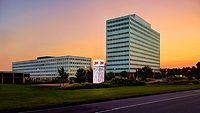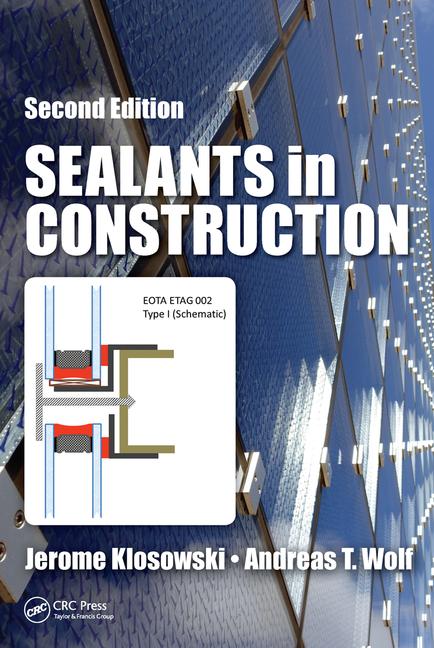Dow Releases First-Quarter 2023 Financial Report
.jpg?1709670950)
Dow recently reported that its first quarter of 2023 saw a decline in sales, volume, local price, and earnings per share compared to the year-ago period. Sequentially, however (compared to the previous quarter), gains in the Performance Materials and Coatings operating segment helped to offset some of the losses.
First quarter 2023 net sales were $11.9 billion, down 22% from the year before. Sales were down over all operating segments with losses driven by slower global macroeconomic activity. Volume decreased 11% versus the year-ago period, led by a 15% decline in Europe, the Middle East, Africa, and India (EMEAI). Sequentially, volume increased by 2%, again due to gains in the Performance Materials & Coatings and Packaging & Specialty Plastics segments. Local price declined 10% from the year-ago period and 4% sequentially due to industry supply additions during soft global economic conditions. Earnings per share were $0.58 compared to $2.34 last year and $0.46 in the previous quarter.
Jim Fitterling, chairman and chief executive officer, commented on the quarter, “Team Dow demonstrated its agility and remained disciplined through challenging macroeconomic conditions –leveraging our structurally advantaged feedstock positions, focusing on higher-value products where demand remained resilient, and aligning our operating rates with market dynamics. Our actions to deliver $1 billion in cost savings in 2023 are progressing, reinforcing our low-cost-to-serve operating model and continuing to maximize cash flow generation. With ample liquidity and financial flexibility, execution of our strategy is on track as we advance our disciplined and balanced capital allocation priorities for long-term value creation.
“Additionally, the annual benchmarking we published today reflects our differentiated portfolio and our disciplined and balanced capital allocation track record. Focused on industry-leading cash generation, Dow delivered best-in-class free cash flow yield on a three-year average and net debt reduction since spin. We also achieved above-peer median three-year average EBITDA margins, return on invested capital, and returns to shareholders, supported by our investments in higher-return, faster-payback and lower-risk projects.”
Dow’s operating segments all suffered financial losses compared to the year-ago period, but some segments did better sequentially than others.
Net sales in the Packaging & Specialty Plastics segment this quarter were $6.1 billion, down 20% from the year-ago period. Sequentially, net sales increased by 1% with volume gains in olefins and polyethylene. Local price decreased 11% year-over-year, as continued resilience in functional polymers was offset by lower polyethylene and olefin prices. Volume decreased 8% year-over-year, driven by lower consumer demand in EMEAI and lower Sadara export volumes due to planned maintenance activity. Operating earnings before interest and taxes (EBIT) was $642 million, compared to $1.2 billion in the year-ago period, while sequentially, operational EBIT was slightly down by $13 million as improved input costs and higher operating rates were offset by lower sales from non-recurring licensing activity and lower equity earnings.
The Industrial Intermediates & Infrastructure segment net sales were $3.4 billion in the first quarter of 2023, down 25% versus the year-ago period. Compared to last quarter, the segment recorded a net sales decline of 8%, driven by lower volumes in industrial solutions and the decline of local prices of polyurethanes and construction chemicals. Local price decreased 6% year-over-year and volume was down 17%, primarily driven by lower demand for industrial, building and construction, and consumer durables applications. Operating EBIT was $123 million, compared to $661 million in the year-ago period, driven by lower pricing and demand as well as higher energy costs particularly in EMEAI. On a sequential basis, operating EBIT was down $41 million as lower energy costs versus the prior quarter were offset by lower pricing and volumes.
The Performance Materials & Coatings segment saw net sales in the quarter of $2.3 billion, down 25% versus the year-ago period. However, sequentially, net sales were up 11% due to improved supply availability and seasonally high volumes for silicones and coatings in building and construction end-markets. Local price decreased 12% year-over-year, primarily driven by lower local prices for siloxanes due to competitive pricing pressure from supply additions in China. Volume declined 11% year-over-year.
Operating EBIT was $35 million, compared to $595 million in the year-ago period, driven by local price declines in siloxanes and lower demand for silicone and coatings applications. Sequentially, operating EBIT increased $165 million, driven by improved supply availability, seasonally higher volumes, and reduced value-chain destocking pressure.
Moving forward, Fitterling aims to remain flexible while navigating the ever-changing global economic landscape.
“Looking to the remainder of the year, our consistent and disciplined execution enhances our ability to navigate the impact of higher inflation on consumer demand and soft global economic activity. We expect the benefit of our operational and cost actions to continue to build as we progress through 2023. We will remain flexible, responding quickly as conditions evolve and expect oil and gas spreads to further support our strategic cost-advantaged positions,” said Fitterling. “Importantly, the underlying long-term growth fundamentals in our market verticals remain intact, as we advance both our Decarbonize and Grow and Transform the Waste strategies to raise our underlying earnings profile by $3 billion across the economic cycle.”
To learn more, visit www.dow.com. To see the full report, visit www.investors.dow.com.
Looking for a reprint of this article?
From high-res PDFs to custom plaques, order your copy today!



.jpg?height=200&t=1709670950&width=200)




